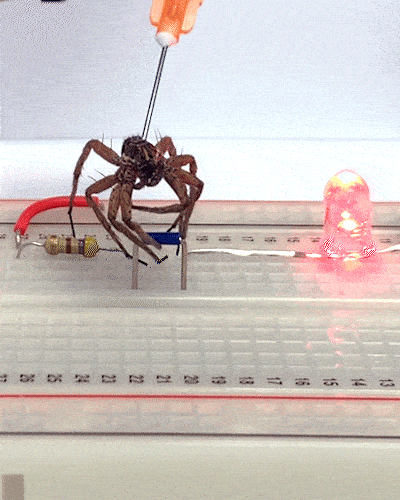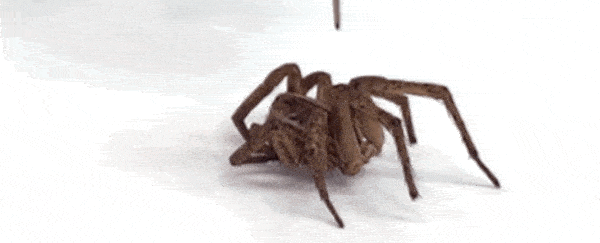When mechanical engineering graduate student Faye Yap saw a dead spider curled up in the hallway, it got her thinking about whether it could be used as a robotics component.
Turning dead spiders into mechanical grippers may be some people's idea of a nightmare scenario, but it could have tangible benefits. Spider legs can grip large, delicate, and irregularly shaped objects firmly and softly without breaking them.
So, in collaboration with mechanical engineer Daniel Preston, Yap and her colleagues at Rice University discovered a way to make a dead wolf spider's legs unfurl and grip onto objects.
They called this new type of robotics 'necrobotics'.
Weirdly, spider legs don't have muscles for extension, but instead move their legs via hydraulic pressure – they have what's called a prosoma chamber, or cephalothorax, which contracts, sending inner body fluid into their legs, making them extend.
So, the team inserted a needle into the spider's prosoma chamber and created a seal around the tip of the needle with a glob of superglue. Squeezing a tiny puff of air through the syringe was enough to activate the spider's legs, achieving a full range of motion in less than one second.
"We took the spider, we placed the needle in it not knowing what was going to happen," says Yap in a video on the Rice University website.
"We had an estimate of where we wanted to place the needle. And when we did, it worked, the first time, right off the bat. I don't even know how to describe it, that moment."
The team were able to make the dead spider grip onto a small ball and used that experiment to determine a peak grip force of 0.35 millinewtons.
They then demonstrated the use of a dead spider to pick up delicate objects and electronics, including having this necrobotic gripper remove a jumper wire attached to an electric breadboard and then move a block of polyurethane foam.
They also showed that the spider could bear the weight of another spider of about the same size.
 (Preston Innovation Laboratory/Rice University)
(Preston Innovation Laboratory/Rice University)
Since spiders extend their legs by exerting hydraulic pressure from their cephalothorax, when they die the hydraulic system doesn't work anymore. The flexor muscles in the spider's legs go into rigor mortis, but, as the muscles only work in one direction, the spider curls up.
While most man-made robotics components are quite complex to manufacture, spiders are complex already and (unfortunately for arachnophobes) are in plentiful supply.
"The concept of necrobotics proposed in this work takes advantage of unique designs created by nature that can be complicated or even impossible to replicate artificially," the researchers say in their paper.
Spiders are also biodegradable, so using them as robot parts would cut the amount of waste in robotics.
"One of the applications we could see this being used for is micro-manipulation, and that could include things like micro-electronic devices," says Preston in the video.
One drawback to the dead spider gripper is that it starts to experience some wear and tear after two days or after 1,000 open-and-close cycles.
"We think that's related to issues with dehydration of the joints. We think we can overcome that by applying polymeric coatings," explains Preston.
The researchers experimented with coating the wolf spiders in beeswax and found that its mass decrease was 17 times less than the uncoated spider over 10 days, which meant it was retaining more water and its hydraulic system might function longer.
This study was published in Advanced Science.
